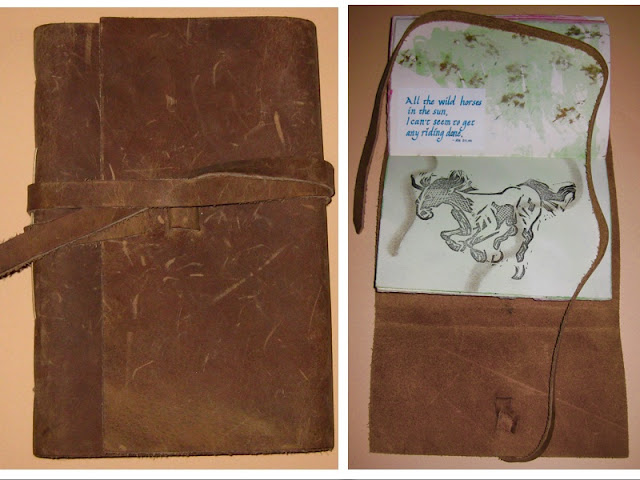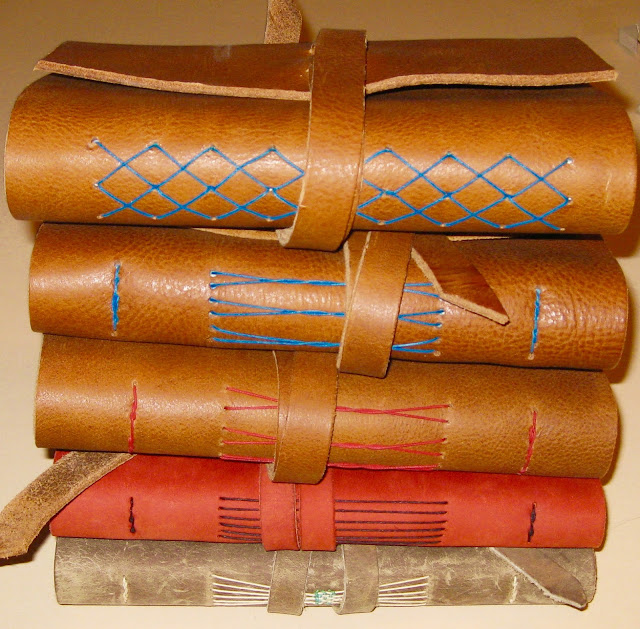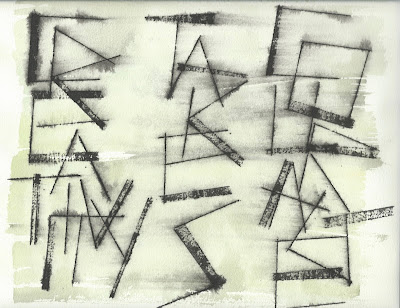Personal journals are for lists, quotes, maps, art, appointments, perhaps prayers, and every day musings. In the 13th to 15th century a Book of Hours was a personally owned prayer book. 

The Contemporary Book of Hours workshop, through the Houston Calligraphy Guild, was taught by Carol Pallesen; she teaches at the Nevada Museum of Art in Reno. Carol's Foundational Calligraphy class starts October 18th.
 |
| From The Illuminated Page, Ten Centuries of Manuscript Painting in the British Library by Janet Backhouse, 1998 |
Medieval Books of Hours were written in Latin and lavishly decorated.
Current journals have many variations; I use mine for calligraphy practice and art journaling.
Current journals have many variations; I use mine for calligraphy practice and art journaling.
The leather covers are 8 x 16 inches. In the workshop we tore 3 sheets of Arches paper. Carol's handouts included resources, definitions, history, sewing cradle instructions & calligraphic page proportions. I highly recommend taking Carol’s worthwhile class.
We decorated paper using Pelikan Plaka paints (the colors come from Germany; black and white are available from Dick Blick). Easy to write over this paint with FW Acrylic ink.
I got carried away - what else is new!?! I decorated pages with a red leather cover from Carol. Recently I bought leather from Tandy Leather to make books using variations of the long stitch binding.
Shameless plug: Today I sell smaller versions on my Etsy site: www.ARTbooks.Etsy.com in different sizes, prices, & with doodads, mostly white pages. Custom orders on request!
Please let me know if you like this book style with wrap around covers. Reminds me of Indiana Jones and the Last Crusade!
©Anne Rita Taylor 2016
©Anne Rita Taylor 2016















































